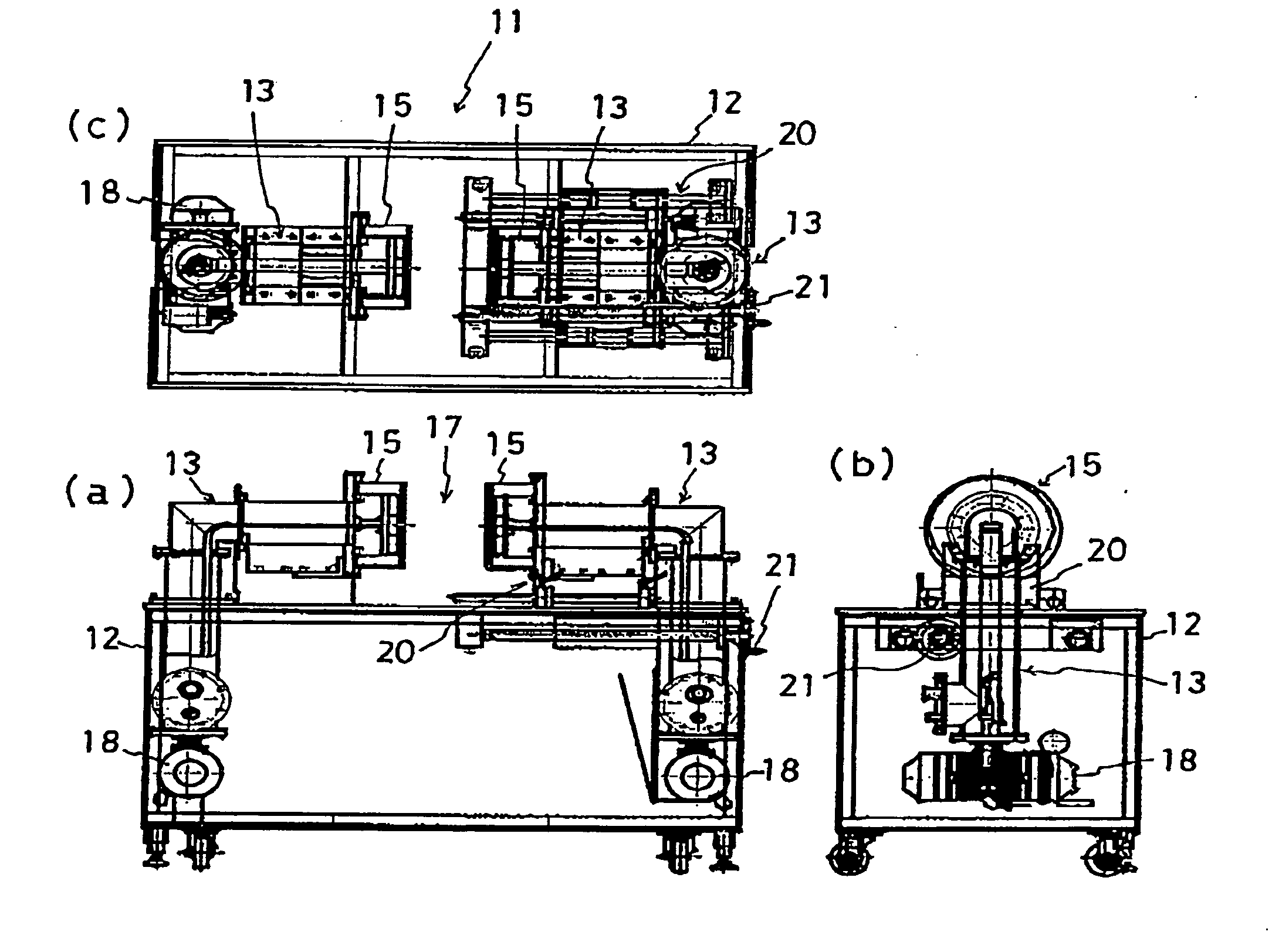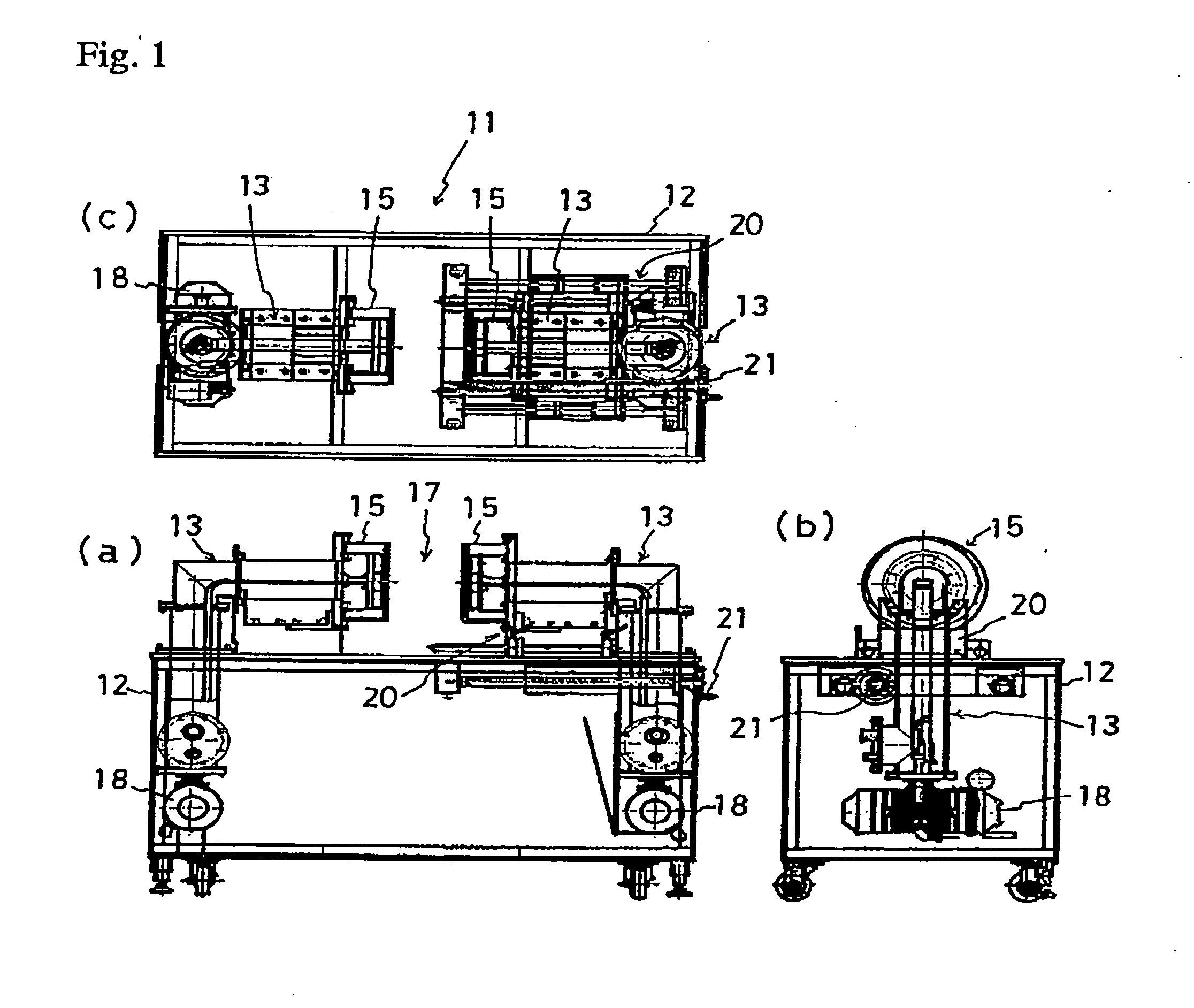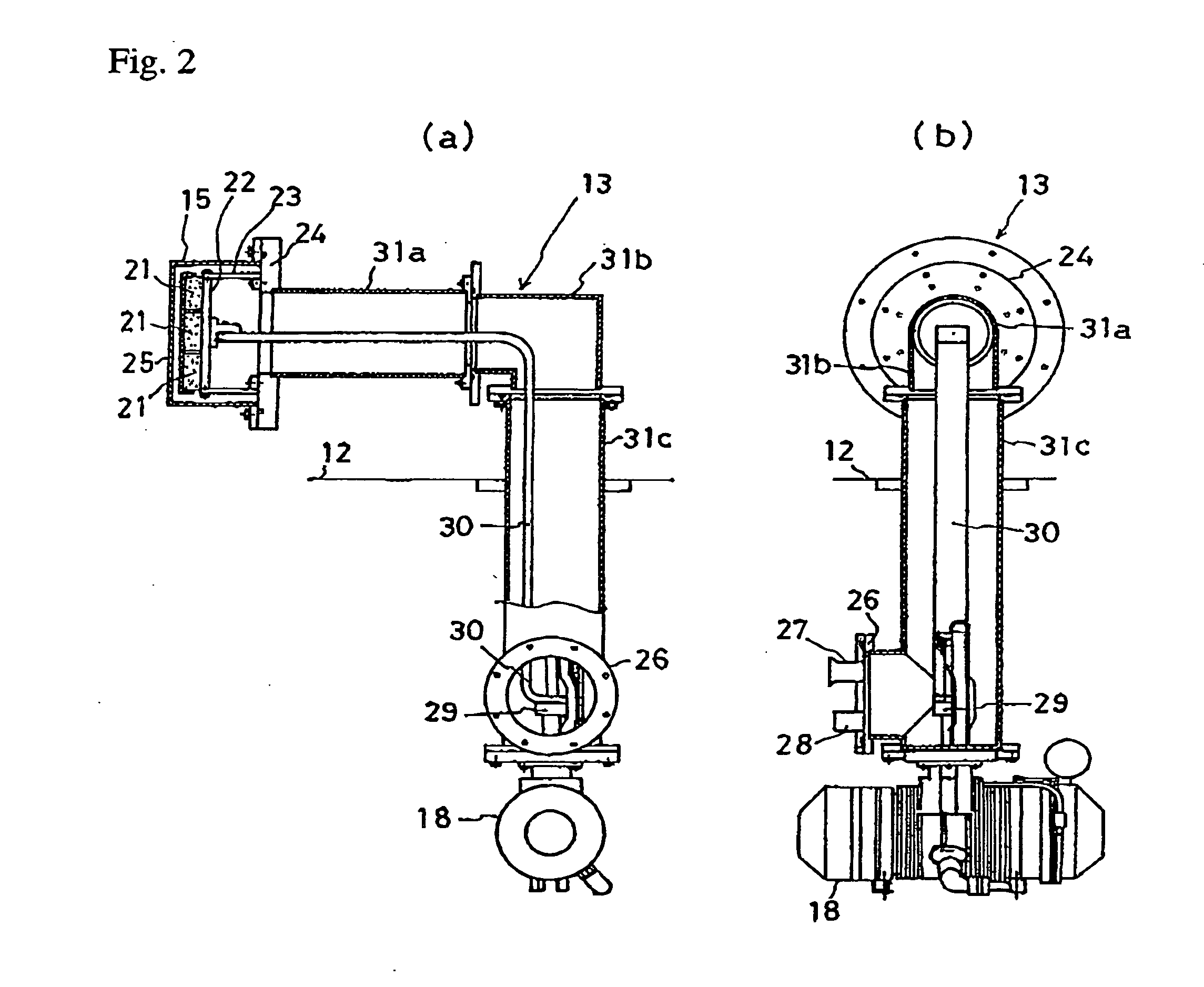Superconducting permanent magnet
- Summary
- Abstract
- Description
- Claims
- Application Information
AI Technical Summary
Benefits of technology
Problems solved by technology
Method used
Image
Examples
Example
[0097] Now, a second embodiment of the present invention will be explained. FIG. 10 shows a magnetic pole assembly in a second embodiment of the present invention, where (a) is a front view, while (b) is a side view. Unlike the first embodiment, the vacuum tube 31 does not extend to the motor portion of the freezer 18, so the freezing part 29 is positioned being separated from the motor portion of the freezer 18. The motor portion and the freezing part 29 of the freezer 18 are connected with a thin pipe 48, so that the freezing part 29 is cooled, resulting in obtaining the same effect as that of the first embodiment.
Example
[0098] Now, a third embodiment will be explained. FIG. 11 is a cross-section view showing a main part of a magnetic pole assembly in a third embodiment. It is not necessary that magnetic pole planes 49 are strictly aligned on the same plane, as is shown in the first embodiment, but it is only necessary that an effective magnetization be done with a magnetic field generated by a single superconducting magnet 39 (not shown).
[0099] In the third embodiment, therefore, magnetic pole planes 49 of the bulk superconductors 21, which constitute the composite bulk 22, may be arranged along a smoothly curved plane like the surface of a cylinder or of a sphere. In this case, as the resultant magnetic field is oriented in some degree to the center of the usable space 17, a rotating machine can be constructed by placing an armature of a rotator, for example, in the usable space 17.
Example
[0100] Now, a fourth embodiment will be explained. FIG. 12 shows plane views for other varieties of arrangement of bulk superconductors 21, in parallel with each other, thus composing a composite bulk. FIG. 12(a) is a plane view for a single-in-line arrangement, (b) is a plane view for a rectangular arrangement, (c) is a plane view for a single-in-line arrangement using a rectangular (square) column type bulk superconductors, while (d) is a plane view for a honeycomb arrangement using a hexagonal column type bulk superconductors.
[0101] Arrangement of the bulk superconductors 21 constituting the composite bulk 22 does not need to have a structure with good symmetry. A plurality of bulk superconductors can be arranged in a single line as is shown in FIG. 12(a), or in a rectangular shape as is shown in FIG. 12(b). A pair of such a composite bulk 22 can be positioned opposing each other at a distance where their respective magnetic fields influence on each other.
[0102] In this case, t...
PUM
 Login to view more
Login to view more Abstract
Description
Claims
Application Information
 Login to view more
Login to view more - R&D Engineer
- R&D Manager
- IP Professional
- Industry Leading Data Capabilities
- Powerful AI technology
- Patent DNA Extraction
Browse by: Latest US Patents, China's latest patents, Technical Efficacy Thesaurus, Application Domain, Technology Topic.
© 2024 PatSnap. All rights reserved.Legal|Privacy policy|Modern Slavery Act Transparency Statement|Sitemap



